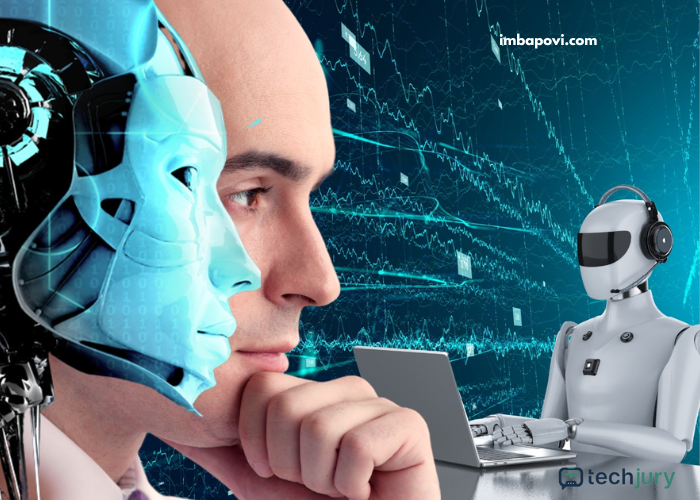In recent years, technology has become an integral part of our daily lives, transforming the way we work, communicate, shop, travel, and entertain ourselves. As innovation continues to advance at a rapid pace, the latest tech trends are reshaping industries and improving the efficiency and convenience of our everyday activities. From artificial intelligence (AI) to the rise of 5G networks, emerging technologies are creating a new era of possibilities. This article explores some of the most impactful tech trends that are revolutionizing our daily lives.
The Rise of Artificial Intelligence and Machine Learning
Transforming Industries with AI
Artificial intelligence (AI) and machine learning (ML) are at the forefront of the technological revolution. These two powerful technologies have already started reshaping industries across the globe, from healthcare to finance, entertainment, and even agriculture. AI systems are capable of performing tasks that were once thought to be exclusive to humans, such as decision-making, data analysis, and pattern recognition.
In daily life, AI is playing an increasingly prominent role. Personal assistants like Siri, Alexa, and Google Assistant have made it easier for users to control their devices and get information simply by speaking. Furthermore, AI is enhancing our experience with smart home devices, self-driving cars, and chatbots that provide customer support.
Machine Learning in Healthcare
Machine learning algorithms are also revolutionizing healthcare by enabling more accurate diagnoses, personalized treatment plans, and drug development. ML-powered applications can analyze medical images, predict patient outcomes, and even detect early signs of diseases like cancer or Alzheimer’s. This allows healthcare professionals to provide more effective treatments and improve patient outcomes.
5G Technology: A Game-Changer for Connectivity
High-Speed Internet for All
5G technology is one of the most exciting innovations in recent years. It promises to revolutionize the way we connect to the internet and interact with digital content. With download speeds up to 100 times faster than 4G, 5G enables seamless streaming, faster uploads and downloads, and improved overall connectivity.
The impact of 5G extends beyond smartphones. It is expected to accelerate the growth of the Internet of Things (IoT), allowing smart devices like home security systems, wearables, and even connected cars to communicate with each other in real time. This will make our homes smarter and more energy-efficient, while providing greater convenience and enhanced security.
Empowering the Future of Smart Cities
5G will play a pivotal role in the development of smart cities, where technology is integrated into urban infrastructure to improve quality of life. From traffic management to energy conservation, 5G will enable more efficient and sustainable city operations. With its ability to support a large number of connected devices with low latency, 5G will allow cities to collect and analyze data in real time, providing valuable insights for urban planning and resource management.
Internet of Things (IoT): Connecting the World Around Us
Smart Homes: Making Life Easier and Safer
The Internet of Things (IoT) refers to the network of physical devices, vehicles, and appliances that are embedded with sensors and software, allowing them to connect and exchange data over the internet. IoT is becoming increasingly prevalent in homes, where smart devices are making our lives more convenient, efficient, and secure.
Smart thermostats, lighting systems, refrigerators, and security cameras are just a few examples of IoT-enabled products that are gaining popularity. These devices allow users to control their home environment remotely, save energy, and enhance security. For example, a smart thermostat can learn your temperature preferences and adjust itself accordingly, while a security camera system can send real-time alerts to your smartphone if it detects unusual activity.
IoT in Healthcare and Wearables
IoT technology is also having a significant impact on healthcare. Wearable devices like fitness trackers, smartwatches, and medical monitoring tools are becoming more sophisticated, helping individuals manage their health and wellness. These devices can track physical activity, monitor heart rate, and even detect early signs of health problems such as arrhythmias or sleep apnea. This data can be shared with healthcare providers for continuous monitoring, enabling more proactive and personalized care.
Virtual Reality (VR) and Augmented Reality (AR): New Dimensions of Experience
Immersive Entertainment and Gaming
Virtual reality (VR) and augmented reality (AR) are two technologies that are rapidly gaining traction in the entertainment and gaming industries. VR immerses users in entirely digital environments, allowing them to experience interactive games, movies, and simulations. AR, on the other hand, overlays digital elements onto the real world, enhancing user experiences with information, graphics, and animations.
In the gaming world, VR and AR are changing how people interact with games and entertainment. VR headsets allow gamers to experience a fully immersive environment, while AR applications like Pokémon Go allow users to engage with the real world through their smartphones. Additionally, VR and AR are being used in fields like education, healthcare, and real estate to provide interactive learning experiences, virtual training, and virtual property tours.
AR in Retail: Revolutionizing the Shopping Experience
Augmented reality is also transforming the retail sector. AR-enabled shopping apps allow customers to visualize products in their own homes before making a purchase. For example, furniture stores offer AR tools that let shoppers see how a sofa would look in their living room. Similarly, AR apps in fashion allow customers to try on clothes virtually, eliminating the need for physical fitting rooms and providing a more convenient shopping experience.
Blockchain Technology: The Future of Security and Transparency
Enhancing Security with Blockchain
Blockchain technology, best known for powering cryptocurrencies like Bitcoin, has much broader applications beyond digital currency. Blockchain is a decentralized and secure ledger system that records transactions across multiple computers, making it nearly impossible to alter or tamper with data. This feature makes blockchain an ideal solution for enhancing security and transparency in various industries, including finance, healthcare, and supply chain management.
For example, blockchain is being used to improve the security of online transactions, reduce fraud, and streamline payment processes. In the healthcare industry, blockchain can help ensure the privacy and integrity of patient records by allowing secure, transparent sharing of medical information. Additionally, blockchain can enable more efficient and transparent supply chains, ensuring the authenticity and traceability of products.
Autonomous Vehicles: Redefining Transportation
The Future of Self-Driving Cars
Autonomous vehicles (AVs) represent a major technological breakthrough that is set to transform transportation. Self-driving cars are powered by a combination of AI, machine learning, sensors, and advanced algorithms, enabling them to navigate roads without human intervention. AVs promise to make driving safer, more efficient, and environmentally friendly, while reducing traffic congestion and the need for parking.
In daily life, autonomous vehicles will revolutionize commuting and travel. Imagine a world where you can simply summon a self-driving car to take you to your destination while you relax, work, or engage in other activities. Furthermore, AVs will contribute to the reduction of accidents caused by human error, lowering traffic-related fatalities and injuries.
Impacts on the Environment and Society
Beyond convenience, autonomous vehicles have the potential to address environmental concerns by reducing carbon emissions and promoting the use of electric vehicles. AVs can also improve mobility for people who are unable to drive due to age or disability, making transportation more accessible to a wider range of individuals.
The Future of Work: Automation and Remote Collaboration Tools
Embracing Automation and AI in the Workplace
Automation and AI are revolutionizing the way we work. From chatbots that assist with customer service to AI-driven tools that streamline administrative tasks, technology is helping businesses increase productivity and reduce operational costs. Automation is also being used in manufacturing, logistics, and even agriculture to optimize processes and improve efficiency.
In daily work life, automation and AI are allowing employees to focus on more creative and strategic tasks, while leaving repetitive or mundane activities to machines. Additionally, AI-powered collaboration tools are improving remote work experiences by enhancing communication, project management, and team coordination.
Remote Collaboration Tools: The New Normal
The COVID-19 pandemic accelerated the adoption of remote work, and as a result, remote collaboration tools have become an essential part of modern work culture. Video conferencing platforms like Zoom, project management tools like Slack and Asana, and cloud-based software like Google Workspace and Microsoft Teams are enabling teams to stay connected and collaborate seamlessly from different locations.
As remote work continues to thrive, these digital tools will evolve to offer even more advanced features, such as virtual reality meetings, AI-driven workflow automation, and real-time language translation, making global collaboration easier than ever.
Conclusion: Embracing the Future of Technology
As we move further into the 21st century, the pace of technological advancement shows no signs of slowing down. The latest tech trends, from AI and 5G to IoT and blockchain, are reshaping how we live, work, and interact with the world around us. These innovations are improving our quality of life, enhancing convenience, and creating new opportunities for businesses and individuals alike.
By embracing these emerging technologies, we can look forward to a future that is more connected, efficient, and sustainable. As we navigate this new technological landscape, it’s important to stay informed, adapt to change, and be open to the endless possibilities that technology offers.
In conclusion, the latest tech trends are revolutionizing our daily lives in profound and exciting ways. Whether it’s the rise of artificial intelligence, the advent of 5G networks, or the proliferation of IoT devices, technology continues to push boundaries and create new horizons for us to explore. The future is here, and it’s driven by innovation and the transformative power of technology.





